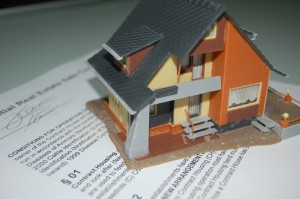Whether you believe the accuracy of the 7.8% unemployment rate announced by the Bureau of Labor Statistics this fall or that the government is manipulating the unemployment numbers to affect the presidential election, one thing is certain: the government isn’t funding potential home buyers’ lack of ambition when it comes to a milestone investment such as financing a home. Unemployment rates are only a piece of the puzzle when it comes to understanding why some U.S. families may be redistributing funds they had previously set aside for a home sweet home. The bigger picture suggests that a reduced sense of urgency, types of employment, and the unique circumstances of the “baby boom” generation will also keep the real estate market stagnant at least into the next few years.
Unemployment Impacts Housing

The unemployment percentage may have dropped this September (2012), but the integrity of that number needs to come into question. What types of jobs are the 92.2% of Americans working? Hordes of recent college grads are returning home in lieu of finding employment and “moving on” because the jobs they studied so hard for either aren’t available or aren’t paying well enough. A current statistic shows that 39% of adults between the ages of 18 and 34 either currently live at home or have in recent years. Furthermore, 61% of adults ages 25 to 34 say that they have friends or family members who have moved back home due to economic hardship. In terms of home buying, it isn’t enough to rely on lower unemployment percentages when a portion of the “gainfully employed” (a.k.a. potential homeowners) are working low paying jobs that aren’t within their expertise or financial expectations. It’s not uncommon to find an individual with a Masters degree working as a barista and it’s not a stretch of the imagination to assume they won’t be buying a house any time soon.
So who are the people purchasing homes? To be fair, there are a good number of recent grads looking for a place to call home, especially those starting families. More space for baby is often the impetus for upgrading from a trendy apartment and turning renters into owners, but this trend is displaced by the opposite end of the generational spectrum: baby boomers. Just as young families are looking for more space, old families are looking for less space in order to reduce the size of the empty nest. The problem with that is that it’s a lateral move for boomers, most of whom already own homes; their purchases only affect the types of houses on the market and not the overall number. So even though buying trends are up in both factions, there aren’t enough small families purchasing homes to offset the number of properties available.
There are too many factors that influence real estate. It’s not enough to say that a higher number of employed Americans will tip the scales in favor of sellers and heal the sluggish market. A slight increase in the number of individuals employed nationally only means that some people are getting back on their feet, not necessarily that they are on firm enough ground to invest in (or be able to finance) a home.
See Also:
- What Is U-6 Unemployment?
- What is the Real Unemployment Rate?
- 10 Awesome Jobs You Can Do From Home
- Is the Government Fudging Unemployment Numbers?
- Unemployment and Employment Charts
- What to Look for in an Online Degree Program
Photo credit: Roland Maier
